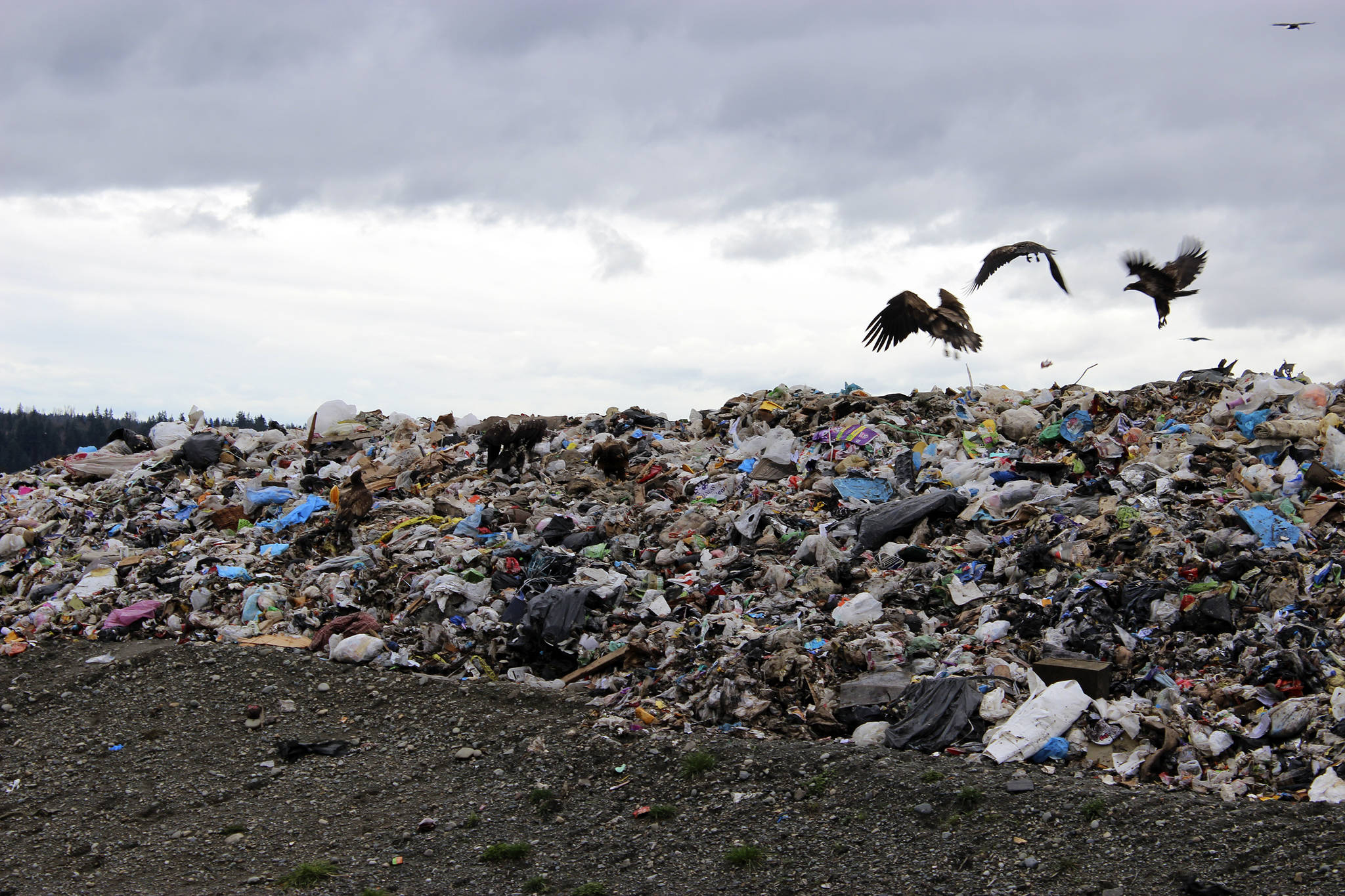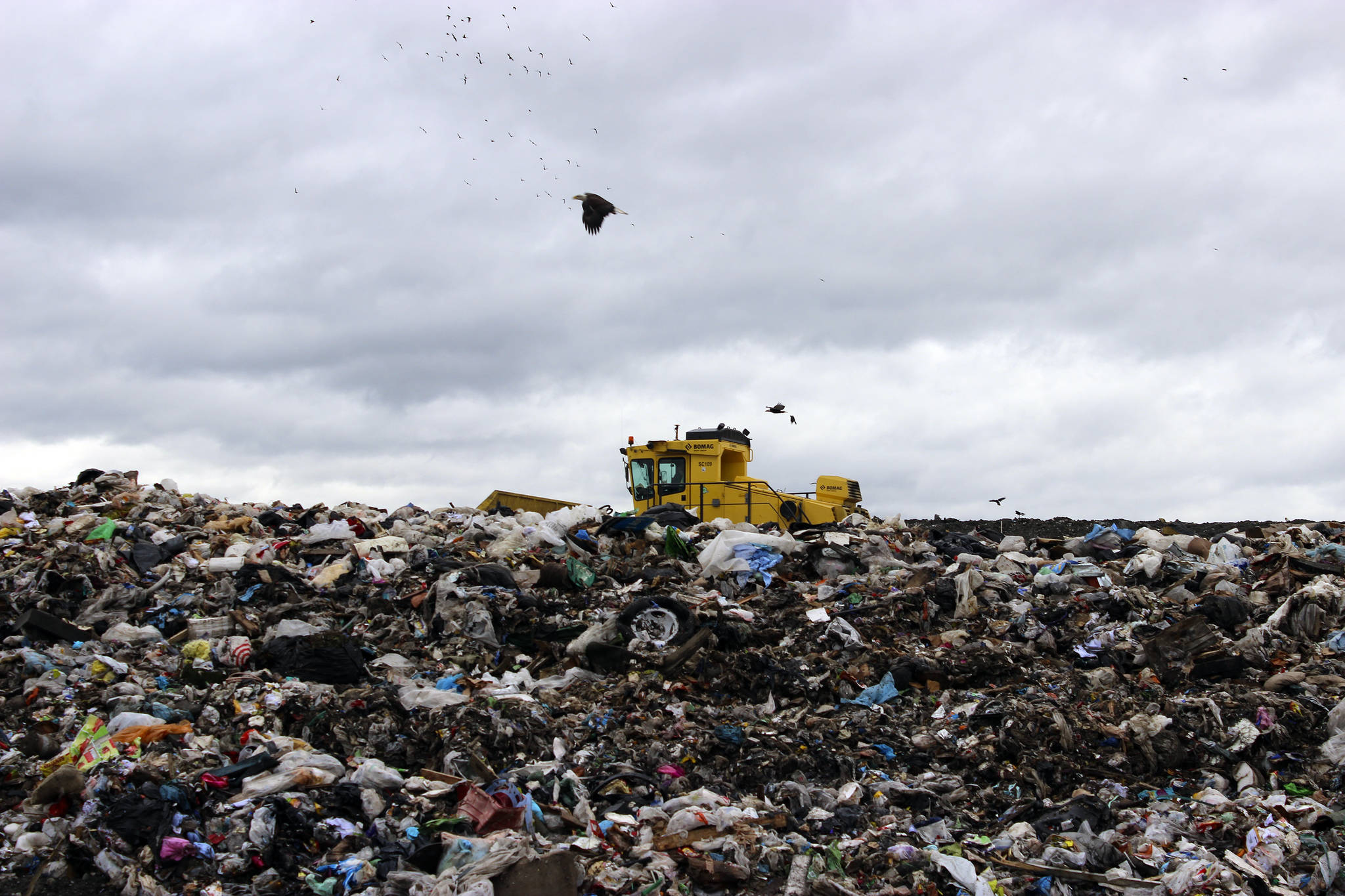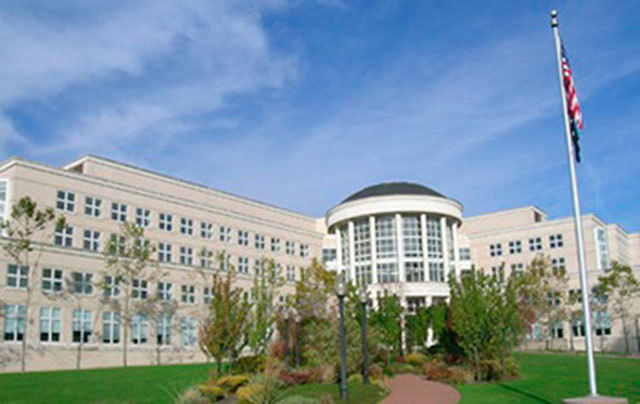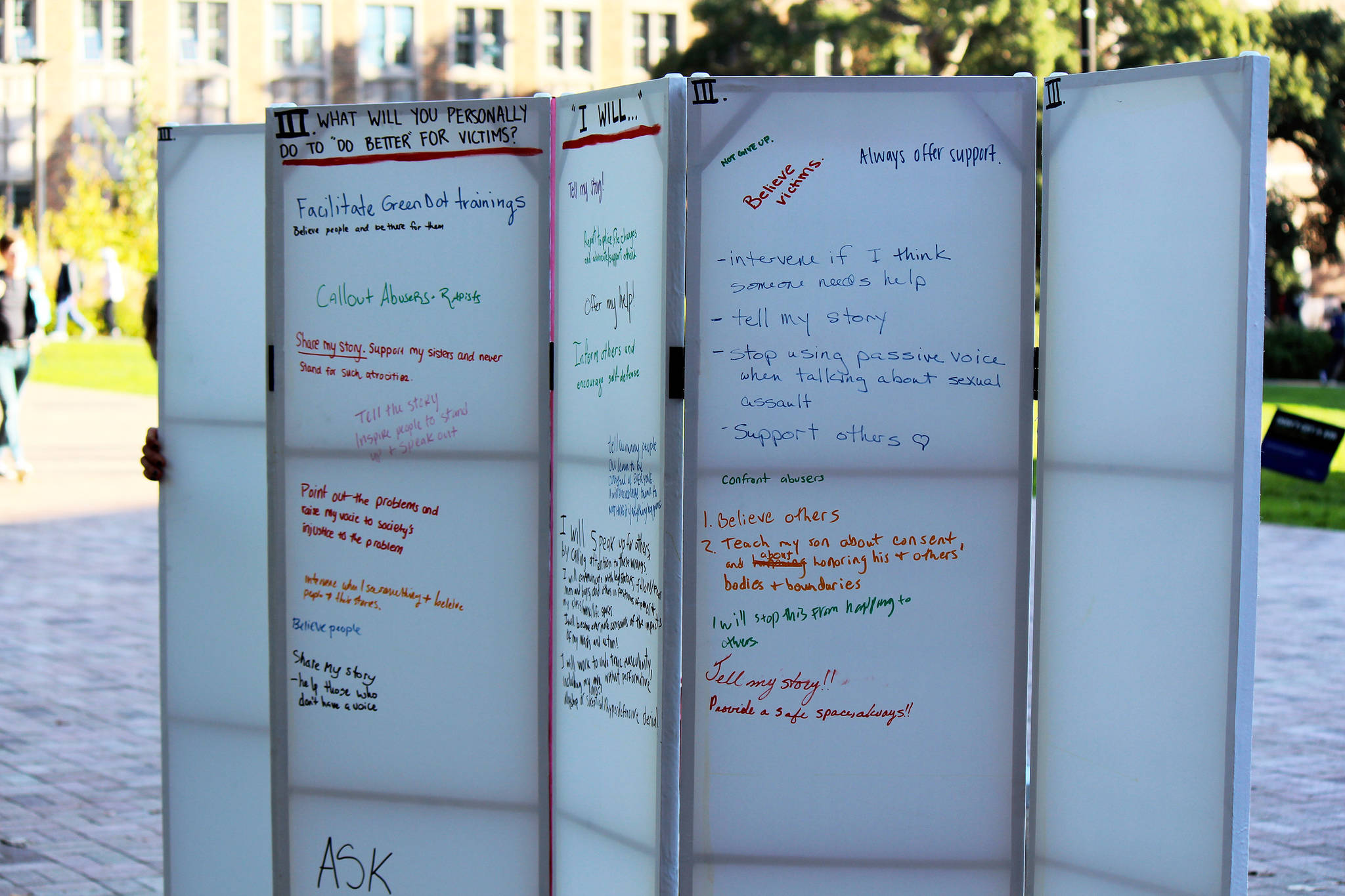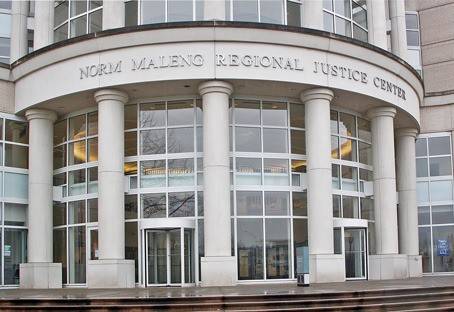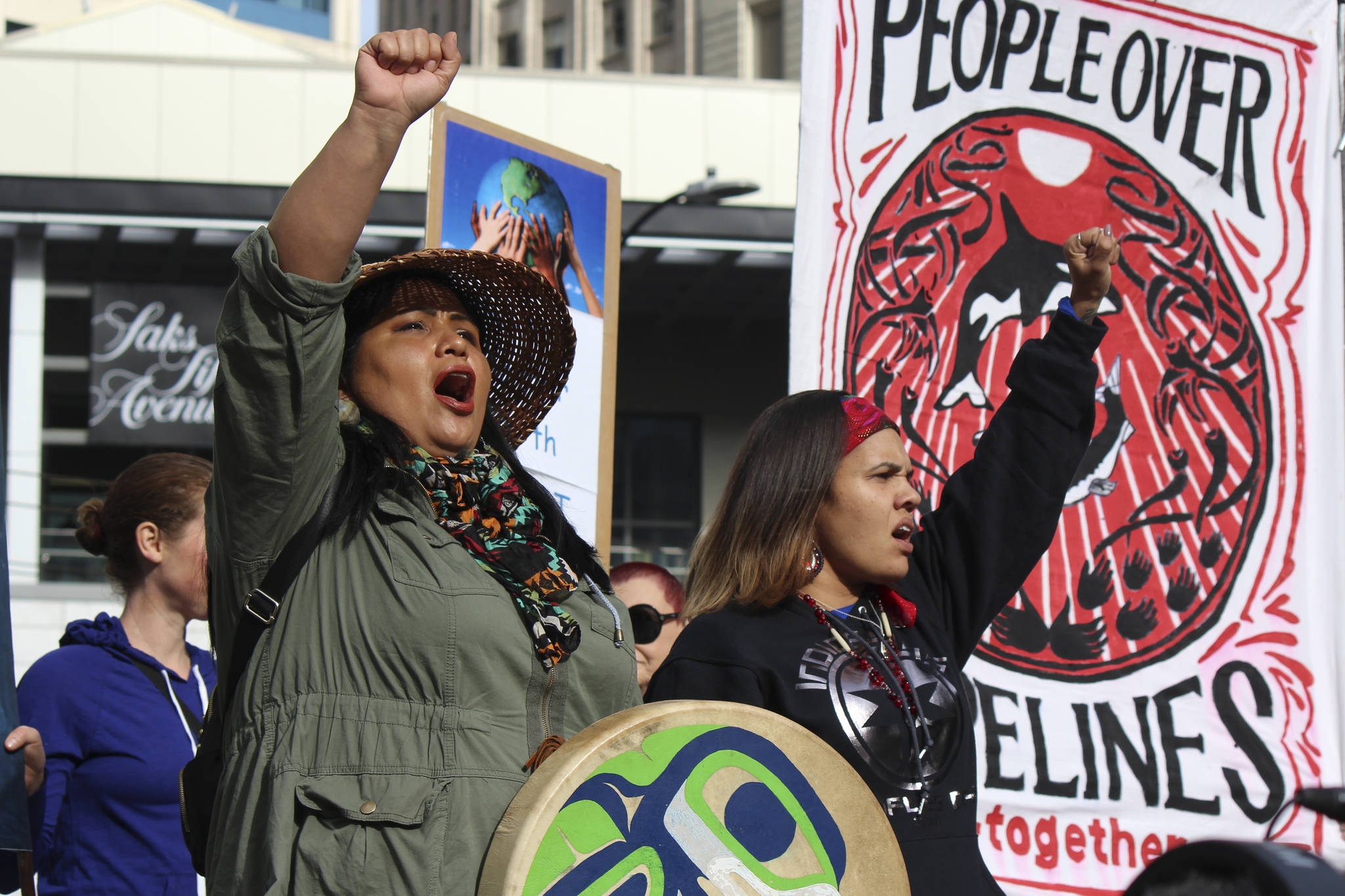By far the best thing about a landfill is its wildlife.
It’s counterintuitive, I know. Until I visited the Cedar Hills Regional Landfill south of Issaquah a few weeks ago to learn about how King County disposes of its waste, I had no idea that it was there, on top of a massive pile of garbage, that I would see far more bald eagles, far closer up, than ever before in my life. There were dozens and dozens of our national bird, flapping about, soaring and alighting, digging into the mounds of plastic with their huge talons, scavenging and squawking like so many grimy pigeons tearing up someone’s lunch. I looked in the other direction, and there were dozens more, lining up along an adjacent hill to wait their turn, before suddenly swooping into the air to dive-bomb the garbage again.
I snapped photo after photo from the window of the truck we were in, some 20 feet away. I was there on a tour with King County Solid Waste Division director Pat McLaughlin and Cedar Hills assistant operations manager Scott Barden, and we drove around the perimeter of the place, and talked about landfill gas and leachate collection, groundwater monitoring and flaring. I took pictures of pipes and plastic liners and trucks full of municipal waste, but really, I was completely distracted by those eagles, and cursing myself that I didn’t think to bring a zoom lens. Who knew? I felt like I was on some kind of safari – leaning out the window to snap photos of rare animals, rather than trash compactors and methane monitoring systems. (We saw deer and ducks, too, and several landfill staffers suggested I come back at dawn sometime to see the resident herd of elk.)
True, I’ve seen a good number of bald eagles over the years, especially over the past decade; they were officially taken off the federal endangered species list in 2007. (When I was a kid, the only real sightings were on quarters and during school presentations about DDT’s effect on eagles’ eggshells.) But still, when I see them now, it’s usually from far away, just one or two at a time, and while kayaking or hiking in the wilds of upstate New York, Puget Sound, or Alaska. They’re always soaring beneath the clouds, or doing something else gorgeous and iconic like snatching a huge salmon from a glacier-green river or landing high in the branches of a Douglas fir.
At Cedar Hills, they dug and squabbled in the smelly trash like seagulls. The contrast was almost comedic.

Apparently, however, our national bird does love landfills — particularly when young. One study published in the Journal of Raptor Research in 2015 reports, for instance, that “landfills may serve as important scavenging sites for hatch-year and second-year eagles, whereas older birds may be more successful obtaining higher quality prey elsewhere.”
Though it graces our national seal and has imprinted many an American mind with its majestic ferocity, and has long been considered by many Native tribes to be a sacred symbol of valor, wisdom, and protection, the bald eagle is also a scavenger, and can be just as gross and opportunistic as any. Bald eagles don’t always eat garbage, of course, though the Cornell Lab of Ornithology does say they “eat a wide variety of foods depending on what’s available.” Barden told me that it’s likely a lot of the eagles are finding rats or other rodents in the trash piles, not just rotting food waste. In any case, I had no idea they were dump frequenters before the trip to Cedar Hills, and it jarred me, in part because of the pure and regal ideas about eagles that I’d had ingrained in me from a young age.
The founding fathers did debate their choice of bird for the U.S. seal, though. Thomas Jefferson and John Adams opted for the eagle because of its stunning white head, golden eyes, and fierce countenance, so the story goes. But Benjamin Franklin disagreed: “I wish the eagle had not been chosen as the representative of this country,” he wrote after it was officially adopted in 1782. “He is a bird of bad moral character; he does not get his living honestly. You may have seen him perched in some dead tree where, too lazy to fish for himself, he watches the labor of the fishing hawk and, when that diligent bird has at length taken a fish and is bearing it to his nest for his young ones, the bald eagle pursues him and takes the fish.”
Franklin went on to call the eagle a “rank coward, commonly fleeing birds the size of sparrows.” He suggested that the turkey might have been a better choice. “In truth, the turkey is in comparison a much more respectable bird,” he wrote, “and withal a true original Native of America… He is besides, though a little vain & silly, a bird of courage.”
So much for that.
These days, because bald eagles are still federally protected, no matter how they behave (to date, at least one has stolen someone’s cell phone), it is illegal for anyone to disturb them in any way. One Cedar Hills staffer told me a brief story about some landfill neighbors who’d complained that all the bald eagles were messing up their yards, flying around and dropping chicken bones all over the place. Couldn’t Cedar Hills do something about that? No, they certainly couldn’t.
I, for one, am thrilled that they couldn’t. I still find them sublime and breathtaking, even as they dig among King County’s dregs. And the good news for bird watchers is the mid-March convocation (as a group of eagles is called) was just the beginning: Based on past experience, Barden says he expects a whole lot more to show up soon. Anyone can get a free tour of Cedar Hills, by the way; you just have to schedule in advance. When you do, don’t forget your zoom lens.
